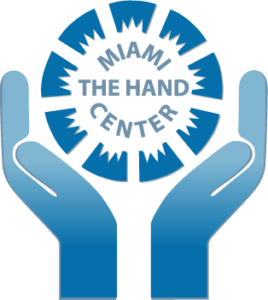Joint Swelling or Synovitis
This is a condition where the lining of your joints are inflamed. This condition causes pain, swelling, redness, and/or warmth of the affected joint. The goal of treatment is to identify the source and treat the inflammation, and to relieve the pain.
Tendon Swelling and Irritation or Tendinitis
This is a condition where there is inflammation, irritation, and swelling of a tendon. Tendons are the rope that allows your fingers to move, and this condition can present with pain and tenderness along the tendon that is worse with movement. The goal of treatment is to identify the source and treat the inflammation, and to relieve the pain.
Carpal Tunnel or Media Nerve Entrapment Syndrome
The Carpal Tunnel is an arch formed by the wrist bones and the carpal ligament on top. This anatomical structure resembles a tunnel with a road + the hole in the mountain.
The Carpal tunnel is normally very crowded. Many structures traverse it on their way from the forearm to the hand. Nine tendons from the forearm muscles (two per finger except the thumb) traverse the tunnel to flex the digits. But the most sensitive and the most delicate structure traversing it is the MEDIAN NERVE. In some predisposed people, the tunnel is rather narrow and any slight swelling of the tendons (tendinitis) inside this unyielding structure can increase the pressure and compress the median nerve. This typically occurs at night when we normally accumulate fluid or after extensive use of the hand when the tendons swell.
When the nerve is compressed, the patient feels pain, tingling, pins & needles, numbness, clumsiness, weakness. With time, the nerve ceases to function well and the fingers become numb, the hand weak and more clumsy. Typically patients will complain that they are dropping objects from their hand or that they have trouble buttoning their clothes. When we find evidence that the nerve is not functioning normally, we recommend release of the carpal tunnel to relieve the symptoms, prevent more permanent damage and muscle loss.
Carpal Tunnel Symptom
The main symptom of carpal tunnel is tingling in the fingers (except for the little finger). The sensation is often similar to the tingling sensation experienced when your feet fall asleep. People suffering from carpal tunnel have worse symptoms at night and often wake up with the need to shake up their hand at night. As the carpal tunnel problem worsens, the pain becomes more constant and the hands become weaker and clumsier. As the disease progresses, the fingertips become more numb and hand function deteriorates. The median nerve innervates the muscle that causes the thumb to oppose to the other fingers. Weakness and then atrophy of this muscle which is irreversible significantly impairs hand function. Unfortunately, because the problems develop slowly over time, many patients accommodate to the problem and present with very advanced disease when the nerve is dead and the muscles are gone.
Causes Of Carpal Tunnel
There are many causes for carpal tunnel syndrome. Most importantly is a probable genetic predisposition. Some people’s tunnel is just narrower than others and in some people the tendons tend to swell more than others after the same amount of activity. Other conditions associated with carpal tunnel syndrome include:
- Diabetes. Nerve compression is poorly tolerated in diabetics who are also predisposed to diabetic neuropathy.
- Thyroid diseases (typically hypothyroidism)
- Obesity (Fat in the tunnel can also compress the nerve)
- Pregnancy
- Menopause and hormonal therapy
- Rheumatoid Arthritis
- Wrist & Hand Injuries
Contrary to popular belief, typing on the keyboard is not really a cause of carpal tunnel syndrome. If it were, we would have a catastrophic epidemic public health issue since millions of people spend their time on the keyboard. It is only after prolonged, un-usual, extensive overuse of the hands that carpal tunnel could emerge; and this only in predisposed individuals.

Hand Procedures
- Arthroscopic Surgery
- Burns
- Carpal Tunnel
- Distal Radial Fracture
- Dupuytren Contracture
- Fingertip Injury
- Microvascular Surgery
- Osteoarthritis
- Trigger Finger
Miami Hand Center
(305) 642-4263
